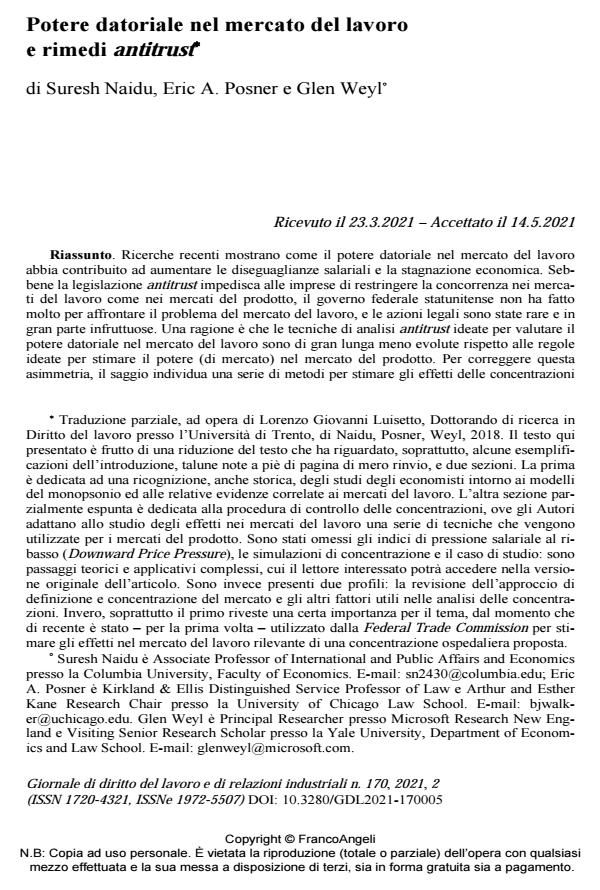Antitrust remedies for labor market power
Journal title GIORNALE DI DIRITTO DEL LAVORO E DI RELAZIONI INDUSTRIALI
Author/s Suresh Naidu, Eric A. Posner , Glen Weyl
Publishing Year 2021 Issue 2021/170
Language Italian Pages 32 P. 257-288 File size 339 KB
DOI 10.3280/GDL2021-170005
DOI is like a bar code for intellectual property: to have more infomation
click here
Below, you can see the article first page
If you want to buy this article in PDF format, you can do it, following the instructions to buy download credits

FrancoAngeli is member of Publishers International Linking Association, Inc (PILA), a not-for-profit association which run the CrossRef service enabling links to and from online scholarly content.
Recent research indicates that labor market power has contributed to wage inequality and eco-nomic stagnation. Although the antitrust laws prohibit firms from restricting competition in labor markets as in product markets, the government does little to address the labor market problem, and private litigation has been rare and mostly unsuccessful. One reason is that the analytic methods for evaluating labor market power in antitrust contexts are far less sophisti-cated than the legal rules used to judge product market power. To remedy this asymmetry, we propose methods for judging the effects of mergers on labor markets. We also extend our ap-proach to other forms of anticompetitive practices undertaken by employers against workers. We highlight some arguments and evidence indicating that market power may be even more important in labor markets than in product markets.
Keywords: Labor market power; Labor markets; Monopsony, Antitrust; Class action; Merger; Noncompete agreement.
Suresh Naidu, Eric A. Posner , Glen Weyl, Potere datoriale nel mercato del lavoro e rimedi antitrust in "GIORNALE DI DIRITTO DEL LAVORO E DI RELAZIONI INDUSTRIALI " 170/2021, pp 257-288, DOI: 10.3280/GDL2021-170005